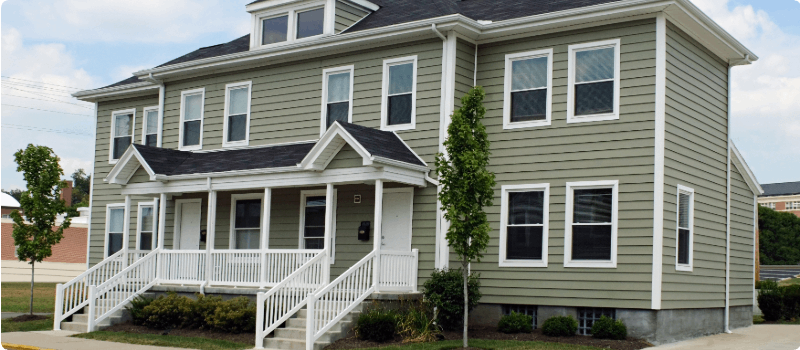Do I need homeowners insurance for a townhouse?
Updated February 15, 2024 . AmFam Team
Whether your townhouse is a rental, in a condo association or one that you own, you’ll need insurance for it. While homeowners insurance for a townhouse might seem appropriate, there are a few factors to consider before purchasing insurance. If you’re the owner of the townhome and aren’t part of a condo association, homeowners insurance is right for you — but if you’re part of a condo association, you’ll want to look at condo insurance. And finally, if you rent your townhome, go for renters insurance.

What is the difference between a condo and a townhouse?
Condos and townhomes may seem similar, but they have a few key differences. A condominium is typically a living space, either a townhome or apartment-style space, that is owned by a condo association and has shared common space among residents that their condo association fees pay for. If a townhome isn’t owned by a condo association, it’s not a condo.
Townhomes are typically multi-story buildings that share at least one wall with another townhouse. They look a bit like row houses without easements between the buildings. They can be owned by a condo association, rented from a landlord or owned by individual homeowners.
What is covered under townhouse insurance?
There generally isn’t such a thing as “townhouse insurance,” so to understand what’s covered, you’ll need to consider your living situation. If you’re living in a townhome that isn’t owned by a condo association, you’ll want to look into renters or homeowners insurance.
If you own your townhouse:
If your townhouse is solely yours and not part of a condo association, you’ll need a homeowners insurance policy to help protect your property. Home insurance for townhouses covers the same things that it would for a regular house, including:
- Damage from fire, smoke, wind and other disasters or hazards
- Damage to your home’s structure
- Theft of or damage to your personal belongings
- Liability protection if someone is injured on your property
You can add other coverages to supplement your homeowners policy that can help cover expenses associated with appliance breakdown, flooding or even identity theft. Learn more about what homeowners insurance can help protect.
If you rent your townhouse:
If your townhouse isn’t part of a condo association and you’re renting it, renters insurance can help you protect your personal property in the event of an accident or theft. Renters insurance for a townhouse can help cover things like:
- Damage to your personal property from a fire
- Replacing your personal property after theft
- Liability protection if someone is injured in your townhome
Even when you’re away from home, your renters insurance follows you wherever you go.
If your townhouse property belongs to a condo association:
Condo association policies typically only cover common areas and the exterior of the building you live in, although some will cover the interior — but only in its original state. To be sure your personal property and any updates to the interior you’ve made are protected, like granite countertops to replace the original vinyl, you’ll want to get your own condo insurance policy.
Condo insurance coverage helps protect the things not covered by your condo association’s insurance policy. This includes personal property and personal liability coverage, which can help cover expenses if someone is injured on your property. Even if your condo association insurance policy covers some things that a condo insurance policy might, you should consider condo insurance to take care of any gaps in coverage.

Get the townhouse insurance coverage you need
If you need help assessing your townhome to understand the right type and amount of protection you need, connect with your American Family Insurance agent (Opens in a new tab). They can help you figure out if you need condo, renters or homeowners insurance and what kind of additional coverages you need to protect what matters most.

